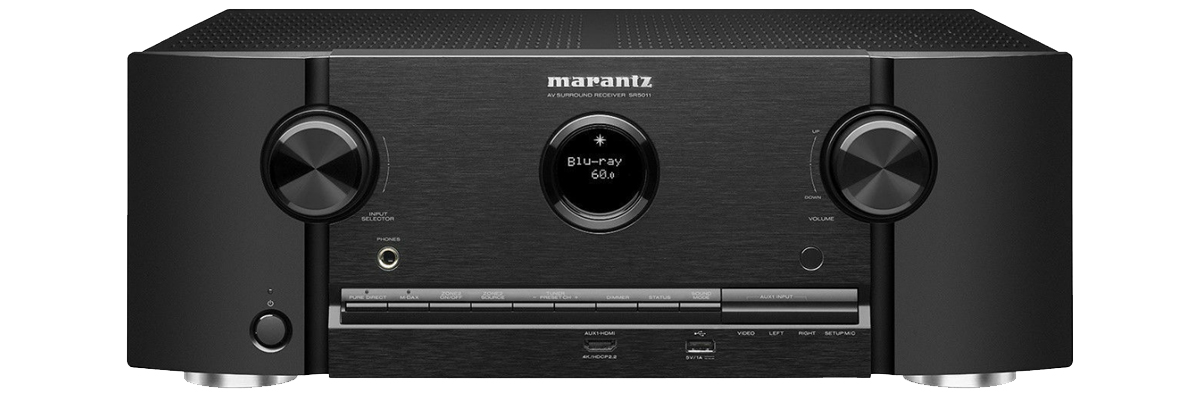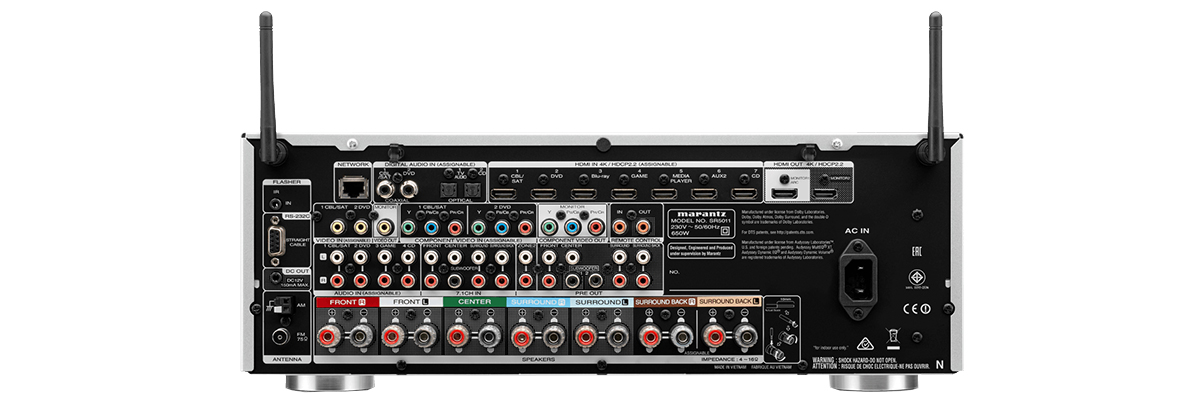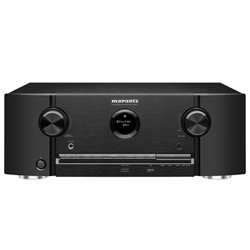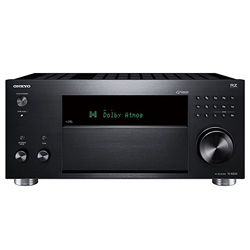 Marantz has announced the new full-size network receiver SR5011 in the line of new products in 2016. What are Marantz SR5011 specs and what is it famous for? See in our Marantz SR5011 review.
Marantz has announced the new full-size network receiver SR5011 in the line of new products in 2016. What are Marantz SR5011 specs and what is it famous for? See in our Marantz SR5011 review.
Marantz SR5011 review
Features
The receiver delivers 180 watts of power to each of the seven audio channels (8 ohms), can work with Dolby Atmos and DTS: X surround sound technologies and supports the updated Audyssey MultEQ XT sound tuning system. The 7.2-channel Marantz SR5011 model can work with the Dolby Atmos 3D audio format in 5.1.2-channel configuration and supports Ultra HD resolution (4K, 60 Hz, 4: 4: 4 Pure Color). The on-board processor scales any video to 4K resolution. With the new firmware, the device opens the ability to decode the DTS: X format, which allows you to complement the DK system with ceiling speakers and provide 3D sound.
Design and build
The Marantz SR5011 housing has a 3-section façade with a round FL display in the center. On the left side is the input selector, power switch / standby and headphone jack, and on the right is the volume attenuator. At the bottom there are buttons for activating Direct, Pure Direct and Auto surround modes, functions for improving the sound of M-DAX2 MP3 files, buttons for working with additional zones, etc. Under the mini-cover are hidden AV connectors and a 3.5 mm jack for calibration microphone. At the very bottom is the HDMI port and USB with support for iPod / iPhone.

Connectivity
The device is equipped with eight HDMI-inputs of standard 2.0a (one of which is located on the front panel) and two outputs with support for HDCP2.2, 4K Ultra HD 60 Hz and all the image processing technologies existing today. Thus, the Marantz SR5011 is completely ready to work with the new BD players and media players that will be used to display 4K video. Of the available outputs, there are two HDMI, 7.2-channel RCA, output for zone 2 (RCA). For speakers, 7 pairs of screw terminals are used. There are two antennas for Wi-Fi / Bluetooth.
Setup
To configure the surround sound in the AV receiver uses an advanced system of automatic calibration Audyssey MultEQ XT, which measures the acoustic field at eight points and works much more accurately than the basic version.
Pros and Cons
Pros
- The device provides a powerful, dynamic and detailed sound in the home theater, and allows you to fully enjoy pure stereo sound
- Screw-type acoustic terminals are lined up at the very bottom, which is very convenient
Cons
- Needs a lot of tweaking to be optimized on high end system
Common features
Product
Model
Brand
Reviews
Amplifier
Channels
Stereo power (RMS), W/Ohm
Output impedance, Ohm
Frequency response
THD in stereo, %
Audio features
Digital to analog converter (DAC)
Bi-amping
Pure direct (straight)
Auto speaker calibration
Speaker A/B switching
Other audio features
Connectivity
Wi-Fi
USB
Bluetooth
Ethernet (RJ45)
DLNA
MHL
Streaming services
Apple Music (AirPlay)
Amazon Music
Spotify
Other streaming services
Extensive connection
HDMI input/output
HDMI ARC (Audio Return Channel)
HDMI eARC (Enhanced Audio Return Channel)
HDMI CEC
Digital content protection (HDCP)
Subwoofer output (LFE)
Headphone output
Optical digital input
Coaxial digital input
Composite input
Component input/output
Phono (MM) input
Front panel connectors
Multi channel preamp output
Video features
HDR (High Dynamic Range)
4K signal pass-through
8K signal pass-through
HDMI signal pass-through
3D signal pass-through
HDMI pass-through in standby mode
Video conversion
Analog to HDMI scaling
HDMI to HDMI scaling
Dolby Vision
Other video features
Additional features
Voice control
App control
Display
Tuner
Sleep timer
Auto power off
ECO mode
Graphical user interface (GUI)
Setup assistant
Firmware update
Other additional features
Multi-room
Multi-room zones
Zone audio output
Zone HDMI output
Multi-room control
RS-232
Remote control input/output (IR)
DC trigger output (12V)
Multichannel surround
Dolby Atmos
Dolby TrueHD
Dolby Surround
Dolby (other)
DTS:X
DTS HD Master
DTS Virtual:X
DTS Neural:X
DTS (other)
Auro-3D
IMAX Enhanced
Multichannel stereo
Audio file formats
MP3
WMA
AAC
WAV
FLAC
ALAC
Other audio file formats
Power
Operational power consumption, W
Standby consumption, W
Removable power cord
User manual
Manual
Dimensions
Size W x H x D, cm/inches
Weight, kg/lbs
Other
Release year



